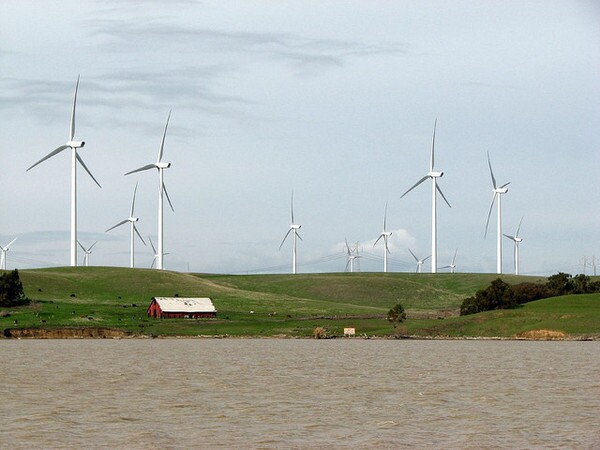Comment Period Extended on Controversial Wind Eagle Take Permit

Here's another ripple from October's shutdown of the federal government: the U.S Fish and Wildlife Service has pushed back the deadline for public comments on a Northern California wind project's application to be allowed to kill eagles.
EDF Renewables' Shiloh IV wind project would put 50 two-megawatt wind turbines in the lMontezuma Hills between Fairfield and Rio Vista in Solano County. EDF is seeking a programmatic eagle take permit under the federal Bald and Golden Eagle Protection Act (BGEPA) that would allow its turbines at Shiloh IV to kill an eagle a year.
Though several other wind energy projects have applied for eagle take permits, Shiloh IV is in line to be the first project granted a programmatic eagle take permit. USFWS published a Draft Environmental Assessment (EA) of the permit before the shutdown, and is now extending the public comment period to make up for the 16 day period during which that Draft EA wasn't accessible to the public.
USFWS published the Draft EA at the end of September, which started the public comment period. As all the relevant documents were offline during the 16-day shutdown, the agency has extended the comment period until November 29.
The extension came batched with extensions on seven other comment periods on a range of projects, including a proposed Habitat Conservation Plan for the Los Osos area in San Luis Obispo County.
The eagle take permit would be granted as part of an Eagle Conservation Plan for the project, which would also involve EDF Renewables preserving eagle habitat elsewhere in California, and retrofitting power poles in Monterey County to make them safer for eagles.
Under USFWS' Preferred Alternative in the Draft EA, EDF Renewables would be obligated to monitor all 50 of the turbines for eagle mortalities. (EDF wants to monitor just half its turbines.) The agency also wants EDF to retrofit 133 eagle-killing power poles at the Lake San Antonio California State Recreation Area, while EDF has proposed to refit just 75 poles.
Either way, USFWS would grant a permit to EDF to kill five eagles over the five-year tenure of the take permit.
Bald eagles were removed from protection under the U.S. Endangered Species Act (ESA) in 2007. USFWS anticipates that few bald eagles will venture into the project area during the period of the permit, and focused its study on golden eagles. Though neither species now enjoys ESA protection, both species are protected by the Bald and Golden Eagle Protection Act, which provides for heavy fines and jail sentences for harming eagles.
Shiloh IV won't be the only wind project in the area: the Montezuma Hills Wind Resource Area already has more than 700 wind turbines in operation. Shiloh IV itself is a "repowering" project: its 550 2-megawatt turbines would replace a number of smaller existing turbines.
The pending permit is working its way through the approval process in the context of USFWS plans to extend the length of eagle take permits under BGEPA from five to 30 years. An announcement on that plan has been expected "any day now" for several months.


